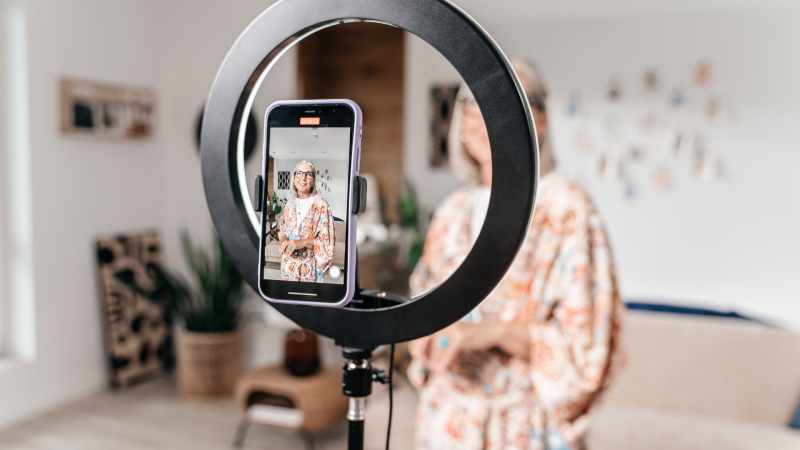Social media contains many influencers and want-to-be content creators promoting brands and products. This marketing style is nothing new and has become a popular way for brands to reach new audiences to promote products. Unfortunately, with the rise of influencers, we’ve seen an increase in fake influencers claiming to have large followings.
Scammers have been using this to engage in fraudulent activities. You must know how to spot fake influencers to protect yourself from becoming a victim.
Today, we’ll share a few tips to help you spot these scammers. Let’s get started!
What Is an Influencer?
An influencer is a person who has built a following on social media platforms such as Instagram, YouTube, and TikTok. These individuals grow their audience and engage with them through posts, stories, and videos. They then use their influence to affect the opinions and behaviors of their followers.
Influencers can be experts in various fields, including fashion, beauty, fitness, travel, and many others. They often partner with brands to promote their products and services, and in exchange, they receive compensation. Influencer marketing has become a major component of marketing strategies for large and small brands.
This can be a way for brands to target audiences in authentic and engaging ways. However, because the influencer receives compensation, it can sway their opinions. Influencers may not always provide a completely honest opinion about products and experiences.

What Percentage of Influencers Are Fake?
It’s hard to accurately assess the level of corruption when it comes to fake influencers. However, research conducted by Statista in 2021 revealed that 49% of Instagram content creators participated in follower fraud. These fraudulent activities are typically intentional behaviors to inflate their engagement and number of followers.
In addition, IMAI uncovered evidence that nearly one in four Instagram influencers purchased at least 15% of their followers. In addition, three in four influencers padded their follower numbers by purchasing more than 10,000 followers.
These influencers used their increased follower numbers to land deals with brands. However, as with many fraud cases, it’s only a matter of time before scammers get caught. Spotting fake influencers has become easier for brands in recent years.
HOT TAKE
It can be hard to determine if you can trust an influencer, so we took a closer look to determine Can You Believe Anything an RV Influencer Says?
How Do You Know If an Influencer Has Fake Followers?
It can be challenging to determine whether an influencer has fake followers, but it’s not impossible. There are typically a few common signs for spotting influencers with fake followers. For example, suspicious comments, inconsistent engagement, and sudden changes in the number of followers are all significant signs.
If it looks too good to be true, it probably is. Accounts with thousands upon thousands of followers should have a healthy engagement from their audience. While some posts will receive more engagement than others, drastic differences should be a huge red flag.
To get a more accurate picture, brands can use third-party tools that analyze an influencer’s following and engagement rates. Tools like HypeAuditor, Social Blade, or FollowerCheck can make it easy to analyze an account. They’ll spot fake followers, engagement, and other metrics that could indicate influencer fraud.

How Can You Spot a Fake Influencer?
If you’re trying to spot a fake influencer, there are a handful of things to consider. Let’s look at some of the most obvious signs that someone may be faking their level of influence.
If The Account Isn’t Verified
Thankfully, many social media platforms recognize the potential damages fraudulent accounts can cause. Some of these platforms provide ways for account authentication. This can be a stamp of approval by the platform that the person running the account is who they say they are.
The verification varies based on the platform but could require the influencer to provide proof of their identity. This could be through a government-issued ID or a tax document that confirms that they are who they claim to be. After verifying the account, the platform will give it a blue checkmark next to the account profile.
Frequency of Posts
Authentic influencers take pride in releasing engaging content regularly. Their followers can depend on something new, fresh, and with a consistent voice. However, fake influencers tend to post sporadically and in spurts. Their content may have a different voice or tone and may sometimes seem awkward.
Often, these scammers don’t follow a specific schedule for releasing content. You may get five posts today and no posts for several days or weeks. However, real influencers know the value of cultivating their relationship with their following. For an audience to get to know and trust the content creator, it takes time and consistency.
Content Quality
Another significant sign of a fake influencer is that their content is low quality. Many scammers won’t even take the time to create original content. They’ll rip off authentic posts from others and claim them as their own.
In addition to low content quality, many fake influencers will have low-quality engagement. Responses to comments often lack creativity and are redundant. They’ll overuse emojis, and responses have very little personality.
While some of the biggest influencers won’t necessarily reply to every comment on their posts, they will to some. When they engage with their audience, they provide quality responses too. If you’re not seeing this from someone claiming to be an influencer, they’re likely faking it.
Unusual Follower versus Engagement Ratio
One of the most obvious signs of a fake influencer is their follower-to-engagement ratio. Accounts with thousands of followers should have some engagement on their posts. If not, it’s typically an obvious sign that they’ve used a service to purchase followers.
Having a large number of followers means nothing if they’re not engaging. Many content creators buy into the lie that having many followers is the only way to measure success. However, if there aren’t actual people behind the accounts following them, their engagement will suffer.
HOT TIP
No matter if you Love ‘Em or hate ‘Em RV Influencers Are Changing the Industry. Find out how!

How Can You Get Scammed By a Fake Influencer?
There are various ways you can get scammed by a fake influencer without knowing it. First of all, many of these creators will host fake giveaways. This often involves giving away personal information or paying a fee to enter for a prize. However, scammers use the giveaway to steal your identity or money.
Some scammers will utilize the information collected in fake giveaways to initiate phishing scams. They will collect more personal information over time or send malicious links that could cause serious harm to you or your financial future. It’s important you only enter contests from authentic creators that you can trust.
You can also get scammed by these individuals by trusting their fake product reviews. When a company provides compensation for a product review, it’s very difficult to say anything negative about it. As a result, the reviews aren’t authentic or an honest representation of the product. If you trust the creator, you could buy a product that’s not effective or safe to use.
Is It Worth Following Influencers?
Whether or not it’s worth following influencers depends on your interests and needs. However, it’s important to remember that these individuals often get paid to promote products and services, which can sometimes lead to biased or misleading content. Following influencers can be a fun and engaging way to discover new products and trends.
Still, it’s vital to approach content with suspicion and make informed decisions about what to buy or support.
Who are your favorite, authentic influencers to follow?
If You Want the Latest Travel News, Join Our Mailing List
Don’t rely on biased RV industry news sources to keep you informed. Stick with Nomadic News. We publish articles and breaking stories that matter to you every weekday.










